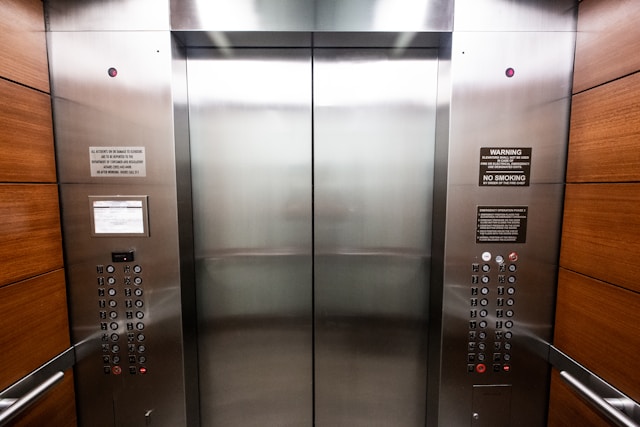What You Need to Know About the Influence of Technology on Elevator Services
Elevators are an integral part of modern architecture and essential in the daily lives of millions of people worldwide. With the embracement of technological advancement, the services associated with elevators have vastly transformed. This blog post elucidates how technology has reshaped the world of elevator services, ensuring enhanced safety, efficiency, and user experience. Join us as we ascend through the levels of innovation, exploring the positive impacts of technological integration in this essential industry.
Digitization and Customization of Elevator Services
The customization of elevator services through digitization has brought a personal touch to a formerly one-size-fits-all service. User interfaces within elevators have become interactive, displaying news, weather, and building information. Passengers can select their destination before entering the elevator via smartphone apps, reducing wait times and improving traffic flow. These digital enhancements not only improve the ride experience but also allow for individual personalization and accessibility for passengers with disabilities.
Enhancing Elevator Safety with Technology
Safety is the third-floor stop on our technological elevator ride, and perhaps the most crucial. As explained by the folks behind Metro Elevator, advanced technology has brought us systems equipped with real-time monitoring and diagnostics capabilities, allowing for immediate detection of any potential issues. Sensors can detect even the slightest misalignment in the elevator shaft or malfunctioning components, prompting preemptive maintenance before a breakdown occurs.
Computerized emergency communication systems have been implemented to ensure passengers can instantly connect with a service center in case of an incident. Furthermore, sophisticated AI-driven algorithms are now guiding evacuation protocols during emergencies, directing passengers to the safest routes. The traditional mechanical safety brakes have been replaced and supplemented with automatic rescue devices capable of bringing an elevator car to the nearest floor for safe passenger exits.
Smart Maintenance and Predictive Repairs
Modern home elevators are laced with IoT sensors that continuously collect data concerning their performance and condition. This data feeds into predictive maintenance algorithms, which analyze patterns to predict when parts will wear out or require service. Such proactive approaches minimize downtimes and extend the lifespan of elevator components. Technicians can arrive on-site with the necessary parts and knowledge about the problem, streamlining the repair process. This is a leap from the reactive maintenance models of the past and ensures a reliable service with fewer interruptions.
The Rise of Energy-Efficient Elevators
In our eco-conscious world, energy efficiency is critical. Technology in elevators now focuses heavily on reducing carbon footprints and operational costs. Regenerative drives are capable of capturing the energy generated by the elevator's descent, converting it into electricity that can be fed back into the building's power grid. Furthermore, modern elevators use energy-efficient motors, LED lighting, and sleep modes during periods of inactivity, significantly trimming down energy consumption without sacrificing performance.
Intelligent Elevator Systems and Passenger Experience
The advent of intelligent elevator systems has reshaped the passenger experience by introducing features such as virtual window screens, mood lighting, and music. These elevators can communicate with building management systems to optimize performance based on usage patterns and even greet passengers by name or with personalized messages. The integration of this technology creates a ride that's no longer just about getting from point A to B but about ensuring comfort, convenience, and a touch of luxury.
Elevators in the Age of Smart Buildings
In the orchestra of smart building technology, elevators play a harmonious part, fully integrated into the building's nervous system. They can adapt to the flow of people throughout the day, prioritizing service to high-traffic areas and syncing with security systems to control floor access. Through cloud-based platforms, elevator data can be viewed alongside other building systems, offering insights into total building efficiency and facilitating better management decisions.
The elevator service industry's evolution, fueled by technological innovation, is indicative of a broader shift toward smarter, safer, and more sustainable systems. As we continue to reach for the skies with taller and more elaborate structures, the role of technology in ensuring efficient vertical mobility becomes all the more pertinent. It's a market constantly moving upwards, and for those involved in the development, implementation, and maintenance of elevator services, staying abreast of these tech trends is no longer optional; it's imperative.
In conclusion, as we reflect on the influence of technology on elevators, we recognize that the impact extends beyond mere mechanics. From enhancing user experience to embedding stringent safety protocols, technology's grip on elevator services is both undeniable and essential. These advancements showcase an exciting trajectory toward a future where the integration of innovation within our built environment continues to lift us to greater heights. With a vigilant eye on the trends and an open mind to change, elevator companies and service providers are set to elevate their offerings, quite literally, to the next level.

